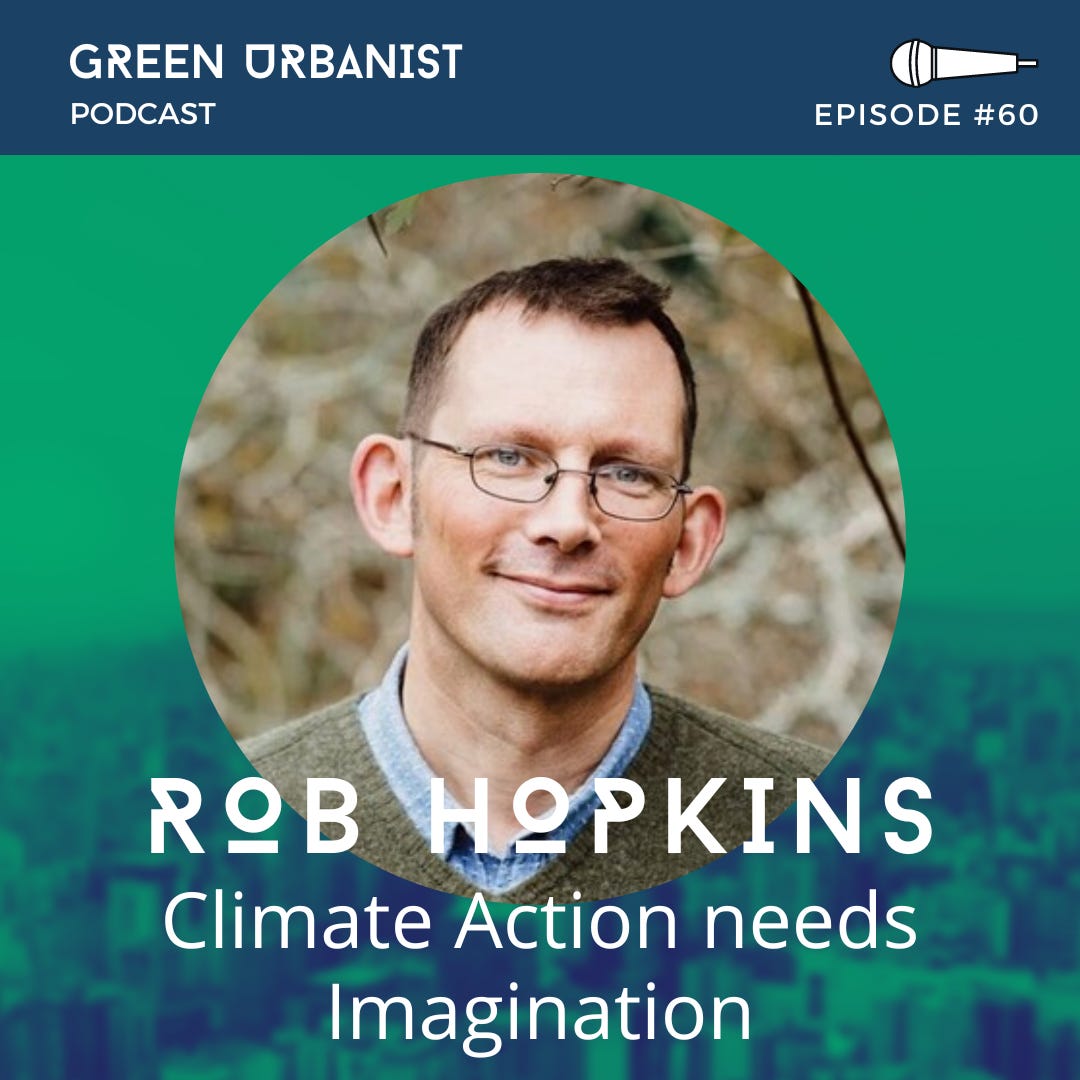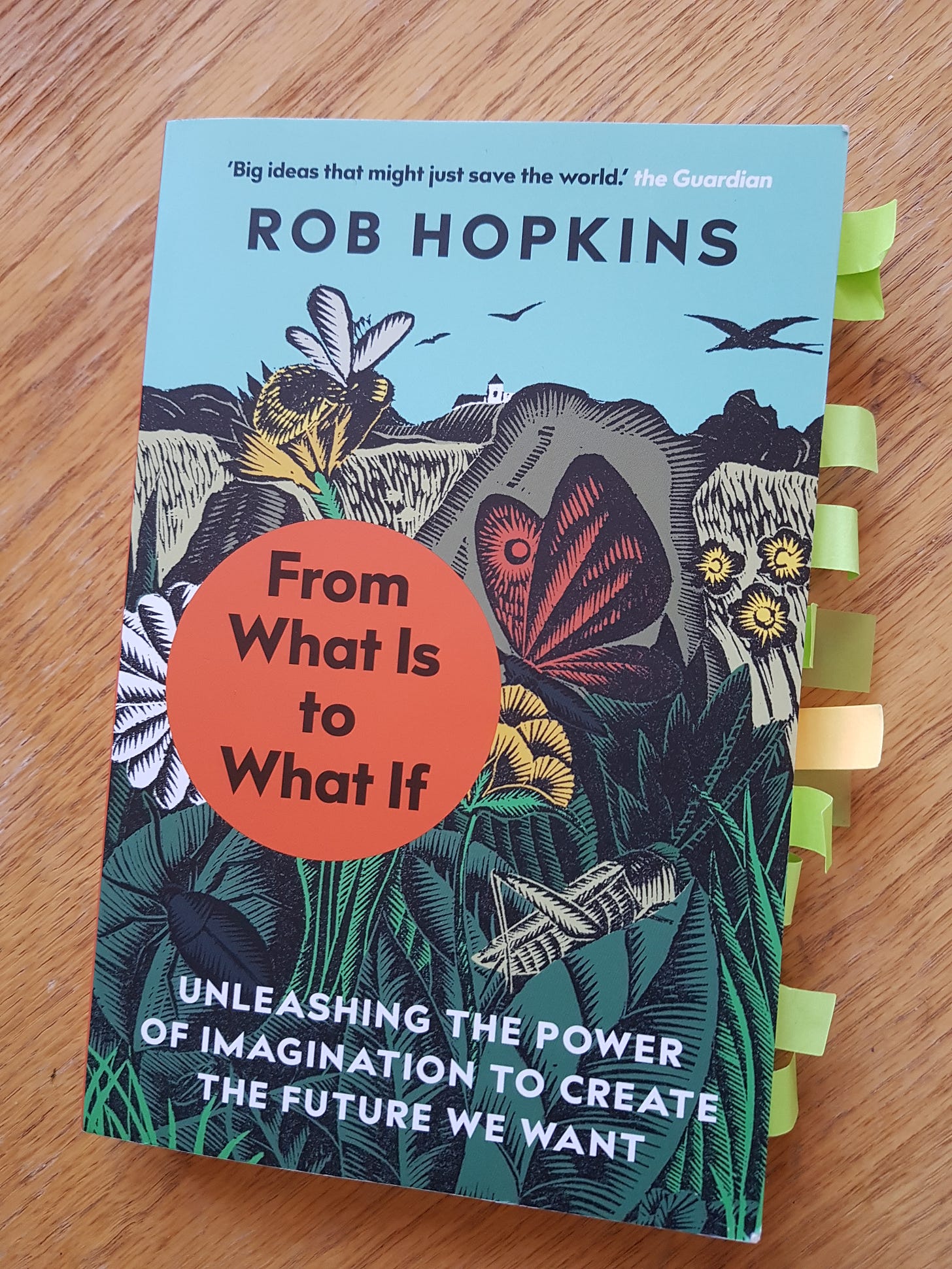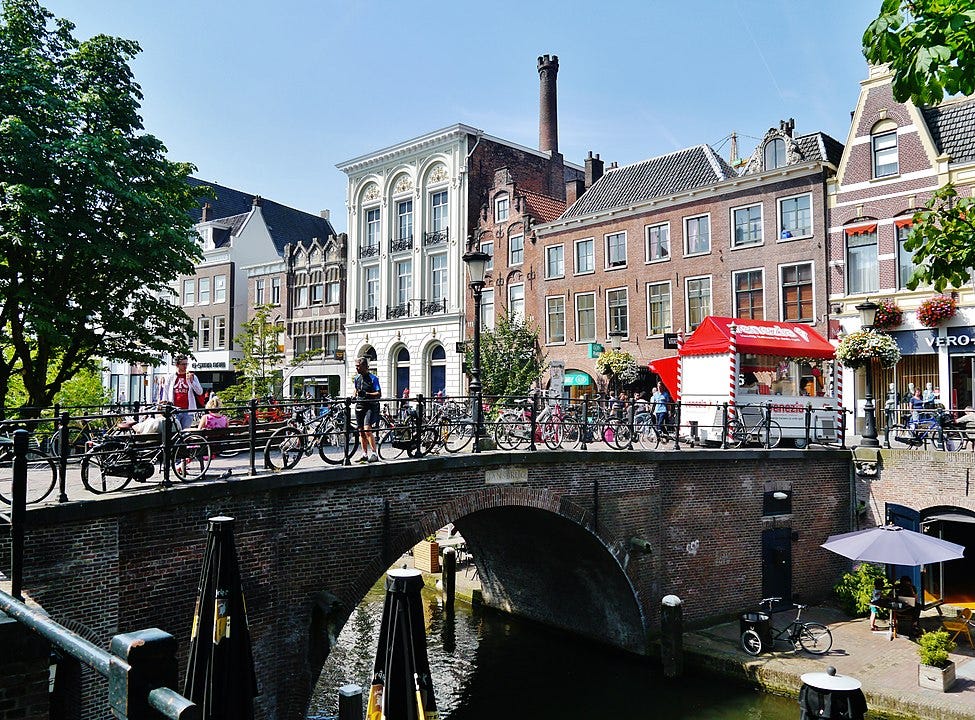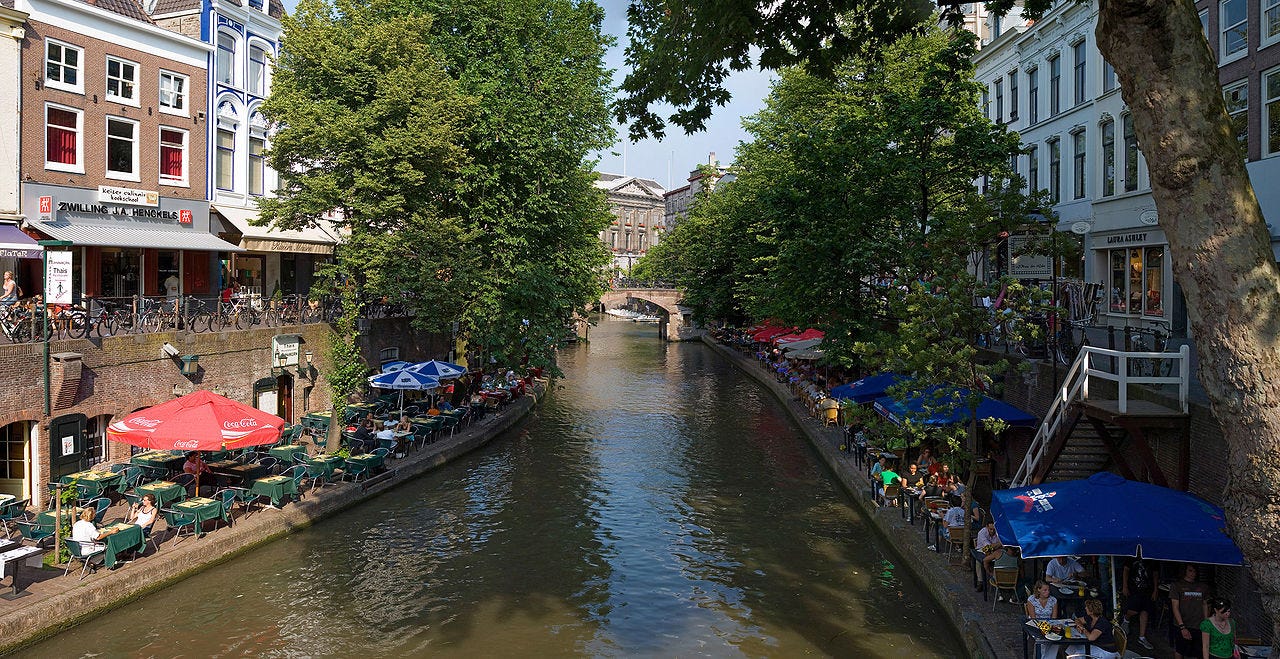Episode #60: Rob Hopkins - Why Climate Action Needs Imagination
Rob is an author and founder of the Transition movement
Rob Hopkins is the co-founder of Transition Network and of Transition Town Totnes, and author of several books including ‘The Transition Handbook‘ and most recently, ‘From What Is to What If: unleashing the power of imagination to create the future we want’. He is an Ashoka Fellow, has spoken at TED Global and at several TEDx events, and appeared in the French film phenomenon ‘Demain’. He holds a PhD from the University of Plymouth, and is a Director of Totnes Community Development Society and of New Lion Brewery. He also hosts the podcast ‘From What If to What Next‘. In November 2022 he was made an Honorary Citizen of Liège in Belgium by the Mayor of the city. His website is robhopkins.net.
In this episode we discuss the vital role of the imagination in tackling climate change and creating a vision for the future to work towards. He is inspiring and entertaining. I really enjoyed this conversation - an invitation to bring more imagination into urban design.
Don’t forget, there is over 40 hours of content like this on the Green Urbanist Podcast, which you can listen to on my website or any podcast app!
Below are images and links to topics Rob and I discussed. Browse through while you listen.
Book: From What Is To What If
Rob has written multiple books but this conversation is centered around his latest book, which is about imagination. It’s really well written and full of inspiring and thought provoking stories. Just read it already! Publishers website.
Field Recordings from the Future
Rob spoke about the profound experience of Utrecht’s bicycle rush hour, which he visited as part of his emerging ‘Field Recordings from the Future’ project. Read more about that HERE.
I haven’t visited Utrecht (yet) but judging from the images below, it looks ridiculously stunning.
A Pattern Language, Christopher Alexander
Rob references this classic book by Christopher Alexander, A Pattern Language (1977), as a source for inspiration for designing joyful and beautiful places. I haven’t read the book in years but am planning to get a used copy. You can find extracts online - check out the pages below. The whole book is like this: beautifully illustrated and to the point. No pretension or deference to the genius of individual architects. It democratises urban design and architecture by breaking them down into understandable chunks. This approach has definitely been criticised but it’s well worth a read. Book website here.








